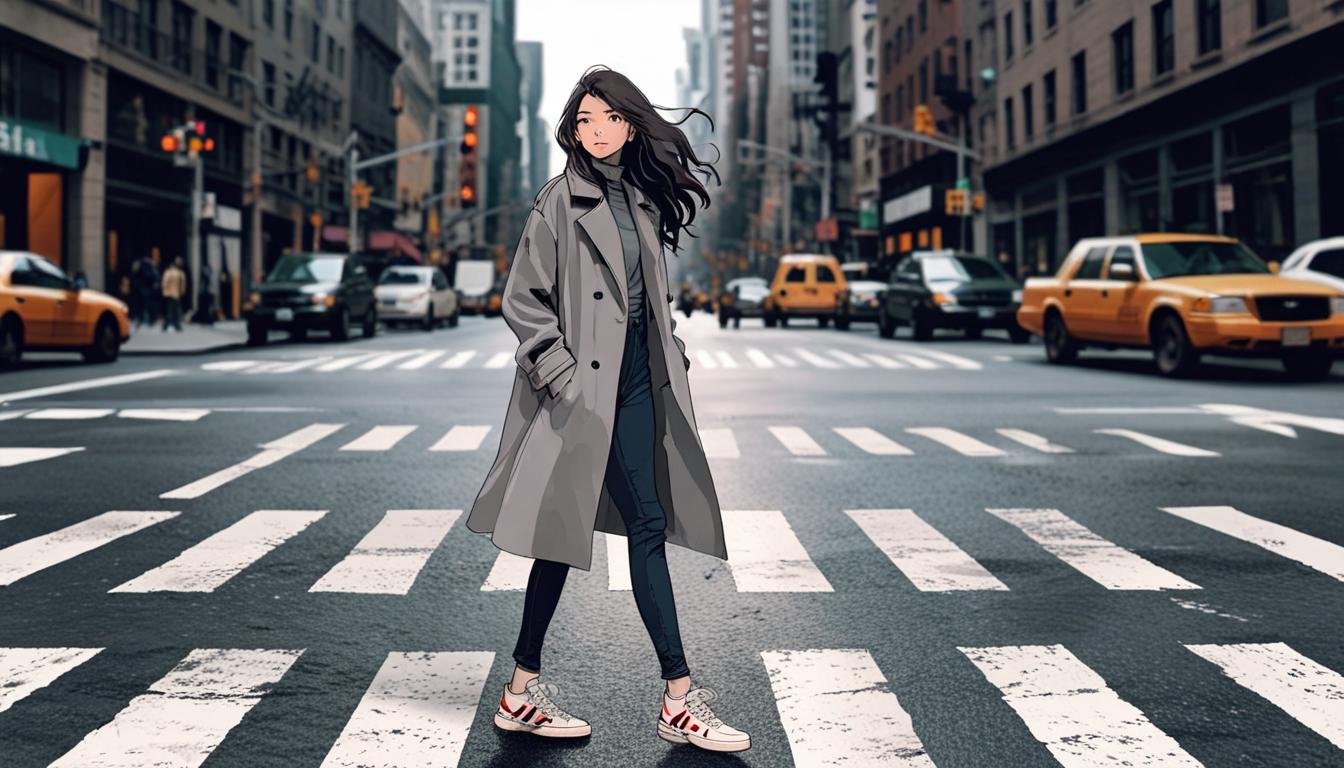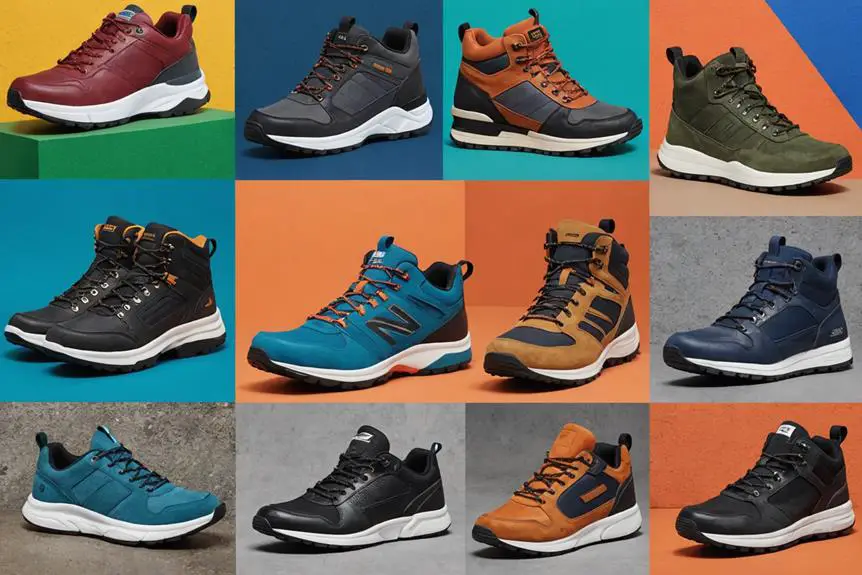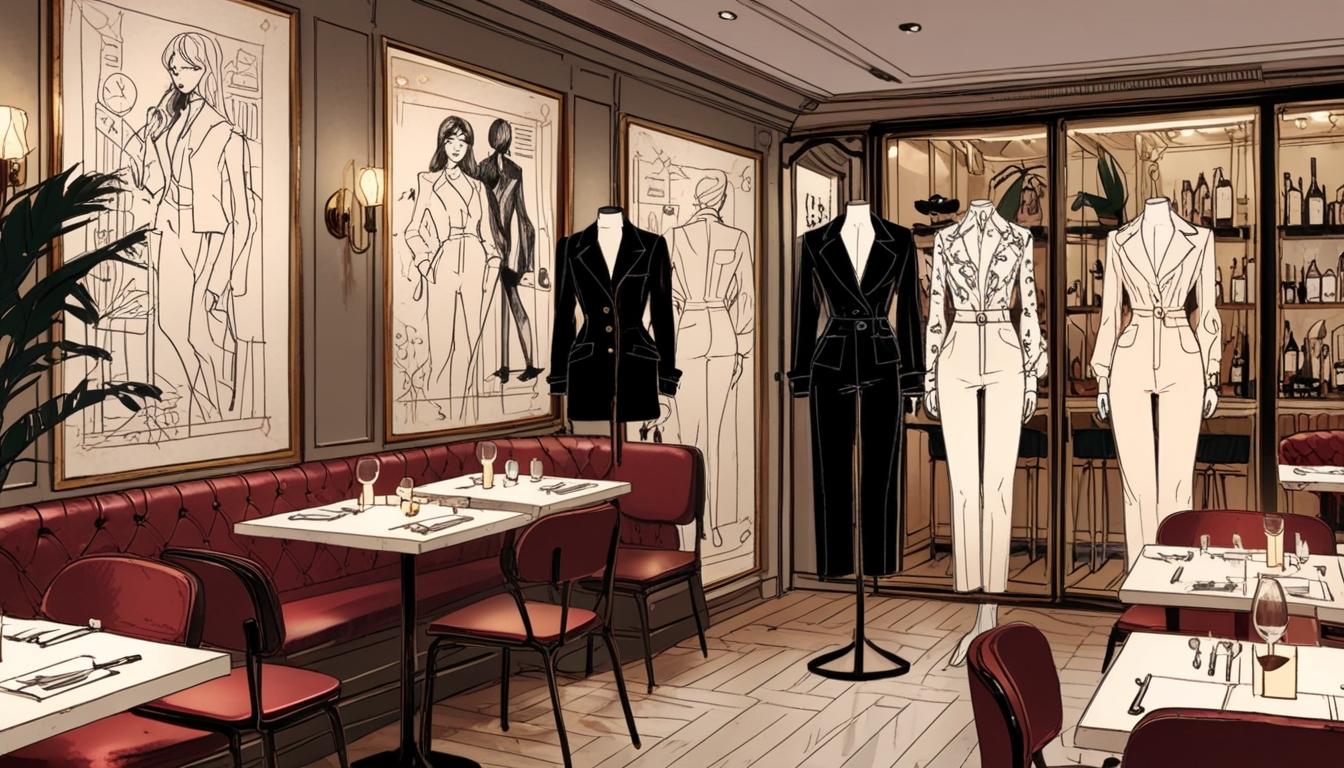You might think the windbreaker is just another piece of outerwear, but its history reveals a fascinating evolution tied to culture and innovation. From its roots in Inuit design to the rise of synthetic materials that shaped its modern form, this garment has undergone significant transformations. As it shifted from functional wear to a staple of hip-hop culture in the late 20th century, the windbreaker's story intertwines with broader societal trends. What do these changes say about our relationship with fashion and utility?
Origins of the Windbreaker
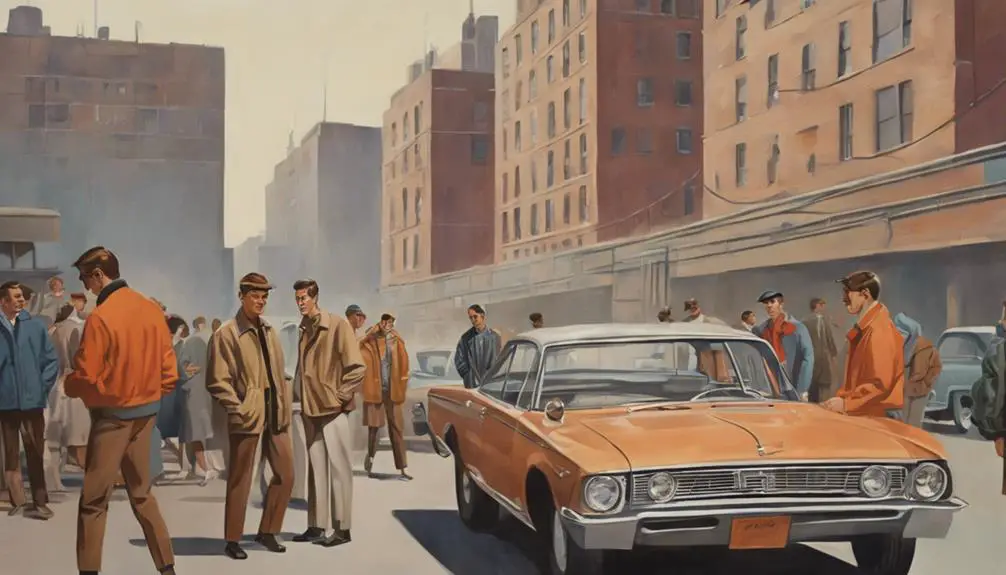
Originating from the practical needs of extreme weather, the windbreaker has a fascinating history. It all began with the Inuit parkas, designed to withstand the harsh Arctic climate, made from seal or caribou skins that offered remarkable insulation. As explorers ventured into polar territories in the early 20th century, they adapted these durable parkas, recognizing the necessity for weather-resistant outerwear. The evolution of outerwear has parallels with brands like Barbour, which have also adapted their designs to meet changing needs and aesthetics, showcasing their rich brand history and overview.
The term "windbreaker" first emerged from the John Rissman company in Chicago, who popularized this innovative concept across the United States and Commonwealth countries. This marked a significant moment in the history of the windbreaker, as it shifted from a necessity of survival to a staple in everyday wardrobes.
After World War II, the construction of windbreakers took a revolutionary turn. Instead of relying on animal skins, manufacturers began utilizing synthetic fibers, which not only enhanced functionality but also improved durability. The design of modern windbreakers evolved to incorporate lightweight materials like nylon, making them accessible and fashionable for casual outings and athletic endeavors alike.
Today, when you slip into a windbreaker, you're not just wearing a piece of clothing; you're donning a garment with roots in survival, exploration, and innovation. The windbreaker has transformed from its humble beginnings into a versatile fashion choice that effortlessly blends style and practicality, proving that even functional attire can have an exciting history worth celebrating.
Evolution of Materials
The materials used in windbreaker construction have come a long way since their inception, especially after World War II. Initially, you might've encountered traditional animal skins, but as the demand for lighter and more functional outerwear grew, the introduction of synthetic materials transformed the landscape. Nylon emerged as a game-changer, providing the lightweight, breathable qualities that made windbreakers not just practical, but also comfortable. With brands like Columbia Sportswear leading the charge, innovations in outdoor gear have incorporated advanced technologies such as weatherproof fabrics to enhance durability and comfort, reflecting a commitment to quality and performance Columbia's innovative technologies.
Further innovations led to the development of weatherproof fabrics, such as rubberized and oil-treated materials, which greatly enhanced the insulation and protective features of windbreakers. These advancements allowed you to stay warm and dry in unpredictable weather, an essential benefit for outdoor enthusiasts.
Today's windbreakers often boast stormproof taping on seams, ensuring that even the most relentless rain can't penetrate. The focus on functionality doesn't end there; manufacturers are now exploring recycled fabrics and blends, catering to environmentally conscious consumers who want their clothing to reflect their values.
This continuous evolution in materials not only enhances performance but also offers a variety of choices, allowing you to select a windbreaker that suits your personal style and needs. Whether you're hiking, running, or just steering through everyday life, modern windbreakers provide protection and comfort, embodying the perfect blend of innovation and practicality. So, next time you pull on your windbreaker, appreciate the sophisticated technology behind its design, which has made it a staple in your wardrobe.
Rise in Popularity
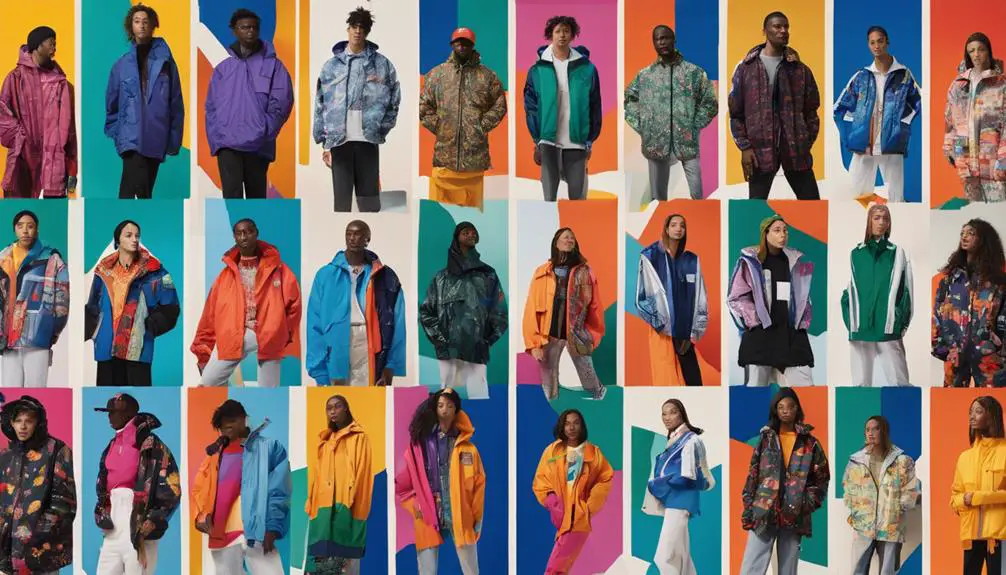
During the 1970s, windbreakers burst onto the fashion scene, quickly becoming a staple in both casual and athletic wardrobes. Their lightweight construction made them perfect for athletes and outdoor enthusiasts who needed protection against wind chill without the bulk of traditional jackets. The emergence of the iconic Racer Jacket during this decade further propelled windbreakers into the limelight, showcasing a sleek and functional design that appealed to many. Additionally, the use of innovative materials in their construction contributed to their popularity, allowing for breathability and comfort during various activities, such as those found in vintage jacket tailoring. Bright colors and bold patterns became synonymous with windbreakers, transforming them from mere functional outerwear into eye-catching fashion statements. As you walked down the street or strolled through a park, you couldn't help but notice the growing popularity among younger men, who embraced these jackets as symbols of casual, yet stylish attire. The lightweight nature of windbreakers made them versatile enough to wear in various settings, from sporting events to casual outings with friends.
As their popularity surged, windbreakers infiltrated everyday fashion, influencing various subcultures and movements. You might find yourself donning one while riding a skateboard or attending a concert, effortlessly blending style and practicality. This cultural phenomenon showcased how windbreakers transcended their original purpose, becoming integral to modern fashion. With their unique combination of lightweight construction, vibrant designs, and widespread appeal, it's no wonder that windbreakers captured the hearts of many, solidifying their place in fashion history and ensuring their continued relevance today.
Windbreakers in Hip-Hop Culture
Fashion in hip-hop culture has always embraced bold expressions, and windbreakers emerged as a defining element in the 1990s aesthetic. Their vibrant colors and unique designs resonated deeply with urban youth, paralleling trends in other iconic streetwear, such as Billabong's vintage styles. These oversized jackets quickly became iconic, representing a unique blend of style and functionality that resonated with urban youth. Rappers and hip-hop artists often paired brightly colored windbreakers with baggy jeans and sneakers, creating distinct fashion statements that spoke volumes about their identity and culture.
The popularity of windbreakers in hip-hop was part of a broader trend towards casual and functional fashion. Artists like Run-D.M.C. and LL Cool J not only rocked these jackets but also elevated them to a staple of streetwear. Their influence helped solidify windbreakers as a must-have item in wardrobes across the nation. The bold colors and unique designs captured the essence of the hip-hop movement, making it clear that fashion could be both expressive and practical.
As you look at contemporary streetwear, you can still see the lasting impact of windbreakers in hip-hop fashion. Many designers incorporate similar styles and vibrant colors, paying homage to the roots of the genre while pushing boundaries in innovative ways. The windbreaker, born from the streets of the '90s, continues to inspire new generations of artists and fashion enthusiasts alike. It's a demonstration of the power of hip-hop culture and its ability to shape trends that transcend time, making windbreakers a true fashion phenomenon.
Cultural Impact
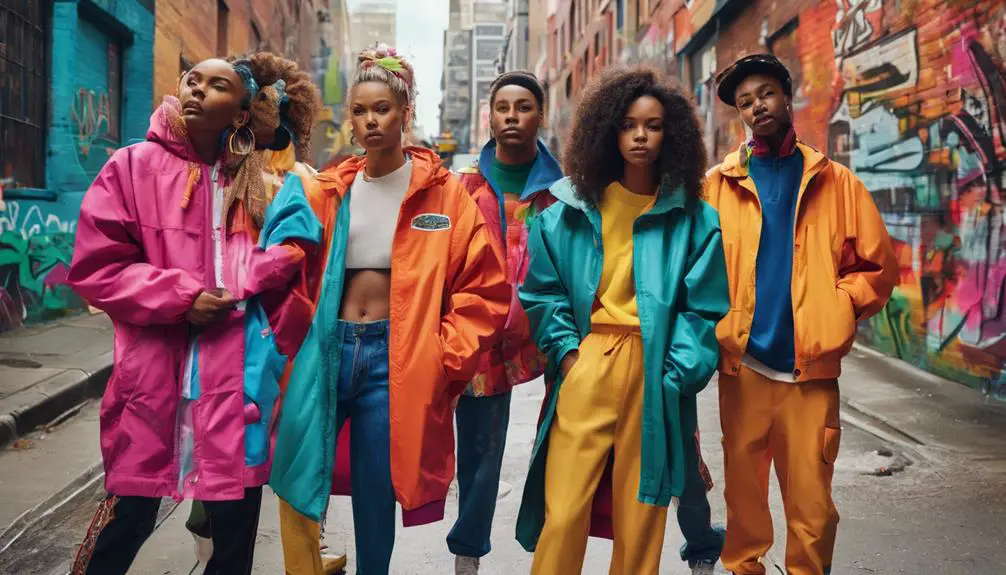
Windbreakers have carved out a unique space in cultural history, influencing not just fashion but lifestyle choices across generations. Emerging as a significant fashion item in the 1980s, windbreakers combined vibrant colors with functionality, making them perfect for outdoor enthusiasts who faced the wind chill during their adventures. As you donned a windbreaker, you weren't just making a style statement; you were embracing a lifestyle that celebrated activity and comfort.
The 1990s brought a new twist, as various subcultures, particularly the hip-hop scene, adopted windbreakers in oversized styles paired with baggy jeans and sneakers. This fusion solidified the windbreaker's status as a cultural icon, showcasing how casual jackets could rise above mere utility to become symbols of self-expression and identity.
Today, windbreakers appeal to a diverse range of consumers, from young trendsetters to seasoned adventurers. They've become a staple in everyday wardrobes, thanks to their practicality and versatility, effortlessly shifting from outdoor activities to urban settings. Nearly every sportswear and casual clothing brand now includes windbreakers in their collections, reflecting their enduring significance in the fashion world.
As you navigate through life, whether gearing up for a hike or meeting friends in the city, the windbreaker remains an emblem of both style and substance, proving that this casual jacket is much more than just a piece of clothing. It's a cultural phenomenon that continues to evolve, inspiring countless fashion choices along the way.
Modern Developments
Embracing modern advancements, today's windbreakers have evolved markedly to meet the demands of contemporary lifestyles. With ongoing improvements in textile technology, you'll find jackets that not only provide better insulation and weatherproofing but also feature lightweight designs, making them perfect for everyday wear. These modern windbreakers come in a plethora of cuts, prints, and colors, catering to diverse consumer preferences and guaranteeing that there's something for everyone, regardless of age.
One of the standout features of contemporary windbreakers is the incorporation of stormproof taping on seams, along with longer cuts that enhance coverage and protection against the elements. This thoughtful design guarantees that you stay warm and dry, whether you're out for a casual stroll or braving harsher conditions. Additionally, today's innovative materials, including recycled fibers, reflect a growing emphasis on sustainability in fashion, allowing you to look good while making environmentally conscious choices.
The resurgence of windbreakers in recent years has solidified their status as essential outerwear. They blend functionality seamlessly with contemporary style trends, allowing you to express your personal style while enjoying the practical benefits these jackets offer. So, whether you're layering up for a chilly day or simply looking for a trendy addition to your wardrobe, modern windbreakers have got you covered—literally! With their lightweight feel and stylish designs, you won't want to miss out on this fashionable yet practical outerwear option.
Usage and Purpose

During outdoor activities, a reliable windbreaker can be your best friend, especially in warmer seasons when wind chill and light rain threaten to disrupt your plans. These versatile lightweight jackets are designed to provide excellent protection, ensuring you stay comfortable and focused on your adventure, whether you're hiking, running, or simply enjoying a day outside. The windbreaker's breathable material helps regulate your body temperature, allowing you to move freely without overheating.
Brightly colored windbreakers are particularly popular among runners, as they enhance visibility during early morning or late evening outings. This added safety feature, combined with their ability to shield you from sudden weather changes, makes them an essential part of your outdoor gear. When temperatures dip, layering your windbreaker with other clothing can keep you warm and cozy, effectively acting as a barrier against the chill.
Moreover, many windbreakers come equipped with large pockets, providing you with the convenience of safeguarding your belongings against the elements while keeping essentials within easy reach. You can stash your keys, phone, or snacks without worrying about them getting wet or lost.
Related Garments
When you're exploring options to complement your windbreaker, several related garments can enhance your outdoor experience. One popular choice is the raincoat, which offers waterproof protection and is typically crafted from heavier materials designed for more severe weather conditions. If you're looking for something casual yet warm, hoodies are excellent for layering beneath your windbreaker, adding a cozy element made from cotton or fleece.
For those chilly outings, parkas and anoraks stand out as insulated options. They provide additional warmth and protection against harsh weather, making them perfect companions for your windbreaker in colder climates. You'll find parkas feature thicker insulation, while anoraks tend to be lighter yet still effective against the elements.
If you're seeking lightweight alternatives, consider a cagoule. These hooded garments provide reliable protection against both rain and wind, often made from waterproof materials that make them versatile for various outdoor activities. Similarly, ponchos offer an easy solution for rain protection, allowing you to move freely while keeping dry. Their design typically includes waterproof materials, ensuring comfort during wet conditions.
With these options, you can easily enhance your wardrobe, making your outdoor adventures more enjoyable. Whether it's a sudden downpour or a brisk wind, you'll be prepared to tackle the elements head-on while staying stylish and comfortable.
Frequently Asked Questions
What Is the Point of Wearing a Windbreaker?
Wearing a windbreaker protects you from wind chill and light rain. By using breathable windbreaker materials and layering techniques, you can stay comfortable while keeping up with fashion trends in outdoor apparel. It's a practical choice!
What Are Some Facts About Windbreaker?
Windbreakers evolved in design, utilizing advanced fabric technology for enhanced comfort and protection. Their cultural significance grew, especially in the 1990s, as they became fashion staples, reflecting personal style and lifestyle choices across generations.
Why Do They Call It a Windbreaker?
They call it a windbreaker because its design evolution emphasizes wind resistance, utilizing advanced fabric technology. This functionality has made a significant cultural impact, making it a go-to choice for outdoor enthusiasts and casual wearers alike.
When Did Windbreaker Start?
Windbreakers started gaining traction in the 1970s, showcasing material evolution from animal skins to nylon. Their origin story reflects a blend of functionality and fashion influence, making them a must-have for casual and athletic wear.


